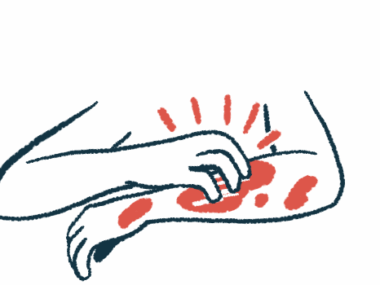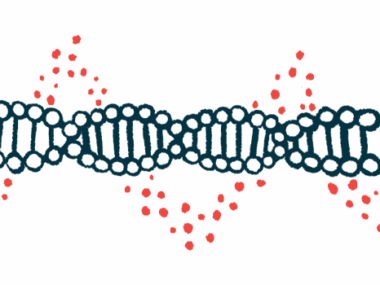Calcipotriol Speeds Wound Healing, Lessens Itching in Small DEB Trial
Written by |

Treatment with ointment containing a low dose of calcipotriol — an analog (similar compound) of vitamin D3 — helped to speed wound closure and reduce itching in people with dystrophic epidermolysis bullosa (DEB) in a clinical trial.
“While corroboration of our results by large-scaled studies is pending, our preliminary data suggest that topical low-dose calcipotriol ointment significantly reduces itch, accelerates wound healing, and can be safely implemented into the daily wound care of DEB patients,” the researchers wrote.
Results were presented in the Austrian-based study, “Impact of low-dose calcipotriol ointment on wound healing, pruritus and pain in patients with dystrophic epidermolysis bullosa: A randomized, double-blind, placebo-controlled trial,” published in the Orphanet Journal of Rare Diseases.
Like other forms of epidermolysis bullosa, DEB is characterized by the formation of sores, blisters, and wounds on the skin. Vitamin D3 is a hormone known to regulate a number of important biological processes; of particular interest, this vitamin is thought to be important for promoting normal wound healing in the skin.
Treatment with low doses of calcipotriol, which mimics the activity of active vitamin D3, showed promise for promoting wound healing in DEB patients in a study published in late 2018. Those early results prompted researchers to launch a small clinical trial (2016-001967-35) testing the effects of ointment with low-dose calcipotriol on wound healing in DEB patients.
The study enrolled DEB patients who had at least two wounds, measuring at least 6 square centimeters (cm2) in area. Either calcipotriol cream (0.05 micrograms per gram) or a placebo were applied to their wounds for four weeks. Then participants underwent a two-month “washout” without treatment, after which they crossed over: participants initially given calcipotriol got placebo, and vice versa, for an additional four weeks.
A total of six participants completed the study; before treatment, their average wound size was approximately 16 cm2.
After two weeks of treatment, the reduction in wound size was significantly larger with calcipotriol than placebo (88.4% vs. 65.6%). Calcipotriol also outperformed placebo in terms of the total number of wounds that were less than 10% their original size after 14 days of treatment (9 of 12 vs. 5 of 12), though no difference was seen after 28 days (8 of 12 in both groups).
“Accelerated wound closure in a greater fraction of wounds may translate into significant clinical benefit for patients,” the researchers wrote.
Throughout the study, participants regularly reported the severity of itching and pain they were experiencing.
“Itch and pain rank highest among EB-associated morbidities that significantly decrease patient quality of life,” the scientists wrote.
Analyses of these results showed that participants experienced a significant and steady decrease in itch over the entire treatment duration when given calcipotriol, whereas no change was recorded with placebo.
Pain scores were significantly better with placebo than calcipotriol after 14 days of treatment. However, there was no difference in pain scores between the two study groups after 28 days.
Safety data in this small trial were largely unremarkable, with no adverse reactions (side effects) reported related to calcipotriol treatment. Blood tests in two participants suggested that the treatment did not affect bodily levels of calcium, which are regulated in part by vitamin D3 activity.
Analyses of the bacteria on the skin of five patients showed increased bacterial diversity following calcipotriol treatment in three of the patients, suggesting that the vitamin D3 analog may have “a beneficial effect on microbial diversity,” the team wrote.
“Our results show that topical treatment with low-dose calcipotriol can accelerate wound closure and significantly reduces itch, and can be considered a safe and readily-available option to improve local wound care in DEB patients,” they concluded.
As for study limitations, the investigators mentioned its low number of patients and the fact that four-week treatment periods appear to be inadequate to assess the effect of low-dose calcipotriol on wound closure.
“A dose-finding study, which so far could not be performed due to limited patient numbers, may further aid in determining the optimal dose for wound healing and its impact on natural disease course,” they added.
An ointment containing calcipotriol is currently marketed under the name Psorcutan as a treatment for psoriasis (a condition where skin cells form itchy, dry patches). The concentration of calcipotriol used in this trial was 1,000 times lower than that used in Psorcutan.





